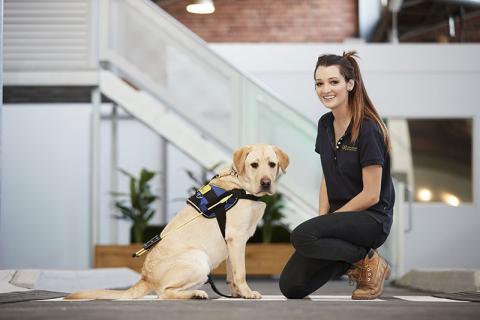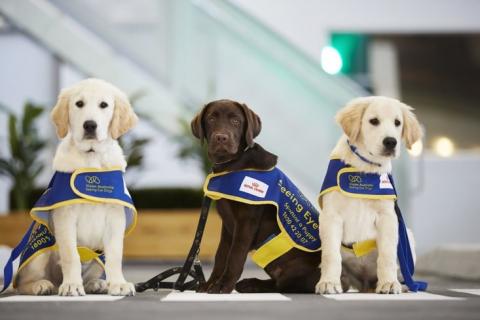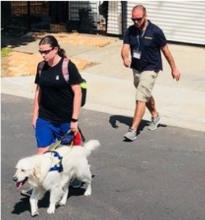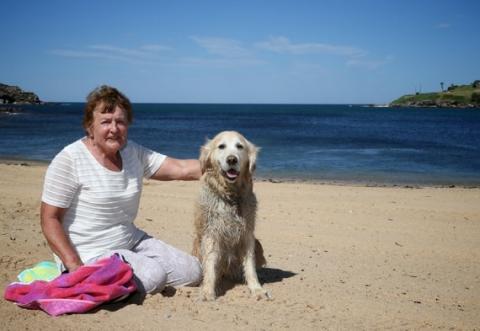Seeing Eye Dogs have a very important job to do and are probably smarter than you think!
Seeing Eye Dogs enable Australians who are blind or have low vision to retain their independence and mobility.
It takes a lot of time, love, patience and money to raise these special working dogs that will one day become a gift of independence. Seeing Eye Dogs have a very important job to do and are probably even smarter than you think! Check out these 7 facts below.
1. Intelligence 'Disobedience'
Most dogs know how to respond to a command, for example when you tell them to sit. But a Seeing Eye Dog’s skills must go way beyond these simple commands.
Seeing Eye Dogs must learn to take initiative, and keep their handler safe, especially when travelling in unfamiliar areas. It takes a lot of time, patience and expertise to bring out these complex skills in pups.
2. Obstacles and Branches
Seeing Eye Dogs must learn to steer their handler around any obstacles on the footpath – or tricky obstacles like low-hanging branches that a dog would easily pass under, but humans wouldn’t.
It takes a lot of skill to judge overhead obstacles when you’re dog-sized. Luckily these dogs are very quick learners and are really smart.
3. Which breeds are best?
Labradors and Golden Retrievers are generally used as Seeing Eye Dogs as they typically have mild temperaments, are the right size, and can quickly adapt to new training. Crossing the two breeds together can help to create a dog that has the optimum health and desirable traits of each breed.
4. Creating the right partnership
When peoples are on the waitlist for a Seeing Eye Dog, they will not necessarily be matched with the next available expertly trained dog. Matching a Seeing Eye Dog to a client is a critical part of the process to ensure that they have a productive and a happy life together. A client’s lifestyle and the personality of both the dog and the client are taken into consideration, and once the perfect match is found, the dog is specially trained to the meet a client’s specific needs.
5.The Best of the Best
Not all the puppies born at the Puppy Centre will go on to become Seeing Eye Dogs. Each pup needs to pass ongoing medical tests, have the right temperament and behaviour, and master the highly specialised skills needed to graduate as a Seeing Eye Dog. They have to be the best of the best. This is critical for the handler as their safety and wellbeing is dependent on their Seeing Eye Dog. Learn more about the volunteer puppy caring program and how you can make a difference.
6. Cats and dogs
Even cats have their part to play in training and creating the perfect Seeing Eye Dog. George the much-loved resident cat at the puppy centre - rules the roost - and he likes to tease and distract the dogs by sitting 10-15 metres away from the dogs during their training. The trainer rewards the dogs for staying focused - and for ignoring cheeky George.
7. A Seeing Eye Dog’s working life
A Seeing Eye Dog’s working life can vary from dog to dog but generally, their handler can tell when their dog is starting to slow down. This can vary from dog to dog but generally, their handler can tell when their dog is starting to slow down. When a dog retires, it will often stay with the owner but if this is not possible, they may be re-housed with family or friends or adopted so they can enjoy their well-earned retirement. Clients generally will need a number of dogs over their lifetime.
There is a waitlist of people needing a Seeing Eye Dog and with each pup costing around $50,000 to care for and train, we need to find the funds to help cover the costs for our newest litters. Will you please help towards the care and training that will do the rest of the job?






